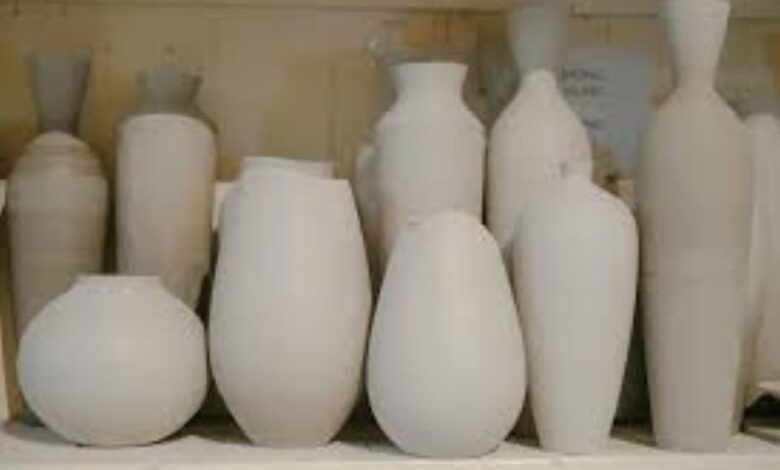Sodiceram: The Future of Ceramic Innovation

In the ever-evolving landscape of materials science and interior design, Sodiceram is making waves as a revolutionary ceramic product that combines traditional elegance with cutting-edge engineering. Unlike ordinary ceramic materials, Sodiceram is engineered with sodium-based compounds that dramatically enhance its strength, durability, and versatility. This new-generation material is being adopted across industries—from residential and commercial construction to automotive, medical, and sustainable architecture.
But what exactly is Sodiceram? What sets it apart from standard ceramics, and why is it generating so much buzz among designers, engineers, and homeowners alike? This in-depth article will explore the technology, properties, applications, benefits, and future of Sodiceram.
What is Sodiceram?
Sodiceram is a term derived from “sodium“ and “ceramics.“ It represents a class of advanced ceramic materials that utilize sodium-based compounds along with alumina, silica, and other high-quality mineral composites. These components undergo a specialized process involving high-temperature sintering, precision molding, and digital patterning to form high-performance ceramic tiles and surfaces with unmatched mechanical and aesthetic properties.
Key Characteristics:
-
High compressive and tensile strength
-
Ultra-low porosity and moisture absorption
-
Excellent thermal and UV resistance
-
Flexible design with customizable colors, shapes, and textures
These properties make Sodiceram ideal for both decorative and structural applications in demanding environments.
Evolution of Ceramic Technology
Traditionally, ceramics were used primarily for pottery, flooring, and decorative tiles. These materials, though attractive, were often brittle, moisture-absorbent, and prone to chipping or cracking under stress. Over time, the need for more durable and versatile materials led to innovations in ceramic engineering.
Sodiceram is the culmination of decades of research in ceramic composites. It combines the natural beauty of ceramics with industrial-grade strength and resilience, thanks to the infusion of sodium silicate and other mineral enhancers.
How is Sodiceram Manufactured?
The production of Sodiceram involves a multi-stage process that incorporates:
1. Material Selection
Only high-grade raw materials—such as refined clays, sodium-based compounds, feldspar, quartz, and alumina—are chosen for the blend. These are mixed to create a homogeneous and reactive base.
2. High-Temperature Sintering
The ceramic mass is subjected to temperatures exceeding 1200°C, promoting chemical bonding at the molecular level. This ensures strength and uniformity in the structure.
3. Precision Shaping
Using 3D modeling and CNC cutting, Sodiceram can be formed into intricate shapes or large slabs suitable for walls, countertops, flooring, and façades.
4. Digital Surface Finishing
Surface designs are created through inkjet printing, laser engraving, or manual glazing, allowing limitless customization for colors, textures, and patterns.
5. Quality Testing
Each batch is tested for hardness, thermal expansion, porosity, and resistance to chemicals, UV, and mechanical loads before being released for commercial use.
Benefits of Sodiceram Over Traditional Ceramics
🔹 Durability and Strength
Sodiceram is 2–3 times stronger than conventional ceramics. It is highly resistant to scratches, chips, and surface deformation, even in heavy-use areas like kitchens and commercial buildings.
🔹 Thermal and UV Resistance
Its low thermal expansion makes it ideal for both hot and cold climates. Unlike traditional tiles, it won’t crack under thermal shock or prolonged sun exposure.
🔹 Moisture and Chemical Resistance
Due to its low porosity (less than 0.5%), it resists mold, stains, and chemical corrosion. This makes it perfect for bathrooms, swimming pools, hospitals, and labs.
🔹 Aesthetic Versatility
Sodiceram is available in a wide range of:
-
Colors: From natural earth tones to bold contemporary palettes
-
Finishes: Glossy, matte, textured, and stone-like
-
Shapes: Squares, hexagons, large slabs, mosaics, and even 3D sculptural formats
🔹 Lightweight and Easy Installation
Despite its strength, Sodiceram is remarkably lightweight, which simplifies logistics and reduces labor costs for installation.
🔹 Eco-Friendly and Sustainable
Most Sodiceram products are:
-
Made from natural or recycled minerals
-
Manufactured with minimal water and energy consumption
-
Recyclable and low-waste in production
-
VOC-free and suitable for LEED-certified green buildings
Where is Sodiceram Used?
Sodiceram’s unique qualities make it a favorite in a wide array of industries:
🏠 Residential Use
-
Kitchen countertops and backsplashes
-
Bathroom walls, floors, and vanities
-
Living room floors or accent walls
-
Outdoor patios, walkways, and facades
🏢 Commercial Use
-
Hotel lobbies and luxury suites
-
Restaurants and commercial kitchens
-
Shopping malls and boutiques
-
Offices and co-working spaces
🏥 Institutional & Industrial Use
-
Hospitals (antibacterial surfaces)
-
Laboratories (chemical-resistant countertops)
-
Automotive interiors (heat-resistant components)
-
Art installations and museum displays
Design Trends in Sodiceram
With the rise of biophilic design, minimalism, and industrial aesthetics, Sodiceram fits perfectly into modern design languages. Some emerging trends include:
-
Marble and granite look-alikes with less cost and weight
-
3D textured panels for feature walls
-
Neutral tones with subtle grains for Scandinavian interiors
-
Dark matte tiles for a sophisticated, modern look
Designers now view Sodiceram as more than a building material—it’s a design canvas.
Challenges and Considerations
Despite its many advantages, Sodiceram does have some limitations:
-
Higher upfront cost compared to basic ceramic tiles
-
Limited local availability in some regions
-
Requires specialized tools and adhesives during installation
-
May need professional consultation for large-scale architectural use
However, these are generally outweighed by the long-term durability and aesthetic value offered by Sodiceram.
Future of Sodiceram in Smart Design
The future is bright for Sodiceram, especially as smart home integration and sustainable construction evolve. Research is already underway into:
-
Self-cleaning ceramic surfaces
-
Air-purifying Sodiceram tiles
-
Energy-storing floor panels integrated with solar technology
-
Interactive ceramic displays with embedded sensors
As the Internet of Things (IoT) and AI grow in importance in architecture, Sodiceram is poised to become a key material in next-generation smart buildings.
Sodiceram vs. Other High-Tech Surfaces
| Feature | Sodiceram | Quartz | Granite | Porcelain Tiles |
|---|---|---|---|---|
| Strength | Very High | High | High | Moderate |
| Heat Resistance | Excellent | Good | Excellent | Good |
| Water Resistance | Excellent | Good | Moderate | Good |
| Maintenance | Low | Moderate | High | Moderate |
| Customizability | Very High | Moderate | Low | Moderate |
| Eco-friendliness | High | Moderate | Low | Moderate |
Choosing the Right Sodiceram Product
When selecting a Sodiceram product, consider:
-
Function: Flooring, wall, or countertop?
-
Location: Indoor or outdoor? Wet or dry?
-
Aesthetic: What tone and texture complement your space?
-
Budget: While more expensive than standard tiles, it can outlast and outperform most alternatives.
Leading global brands and boutique tile studios now offer customized Sodiceram options, and online ordering makes access even easier.
Conclusion
Sodiceram is more than just another ceramic tile—it’s a modern material revolution that brings together science, design, and sustainability. From residential renovations to high-end commercial spaces, this innovative material offers unmatched benefits in strength, appearance, and environmental friendliness.
As architects and homeowners continue seeking long-term, low-maintenance solutions, Sodiceram stands out as the ceramic of the future.
If you’re looking for a smart, stylish, and sustainable way to elevate your interiors, Sodiceram is the material to watch.
In partnership with insightful sources and design experts, The Globe Gist, brings you these updates on the latest innovations in material science and home design. Stay tuned to The Globe Gist for more informative features like this.
Thanks for read our article if you want more like this kind of article visit our site The Globe Gist, and comment us.
